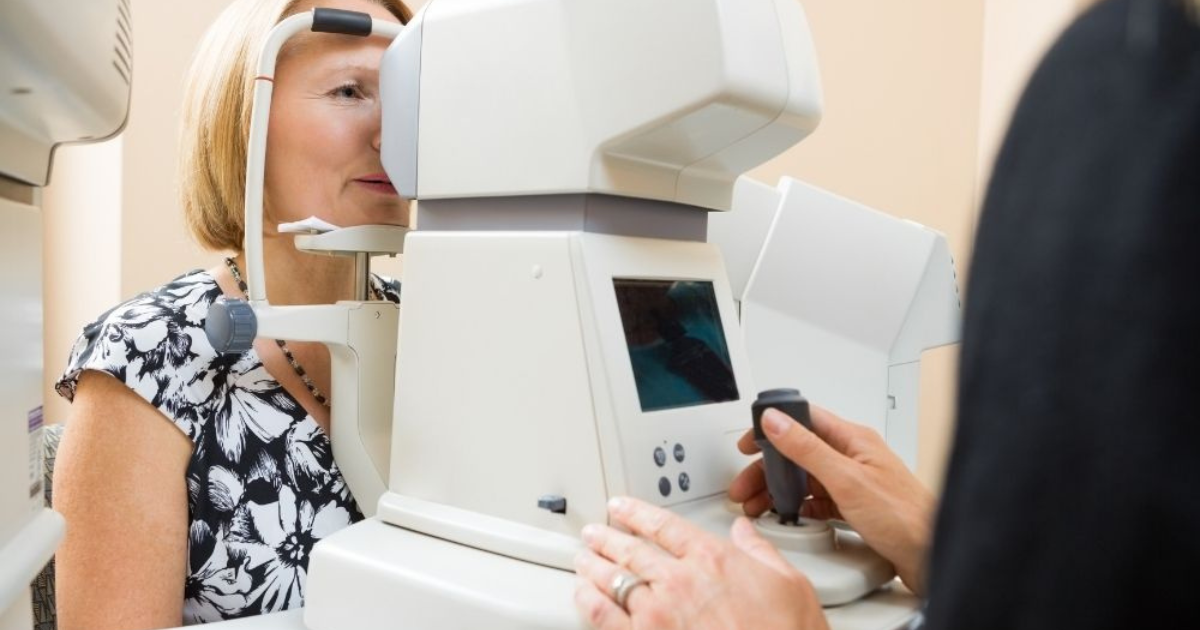Exploring the Non-Contact Computerized Tonometer

Read time: 4 minutes
A Comprehensive Guide to Glaucoma Testing
Regular eye check-ups are not just about updating your glasses prescription; they are an essential part of maintaining overall eye health. Among the various assessments conducted during an eye examination, one particularly important test for detecting potential issues like glaucoma involves the use of a Non-Contact Computerized Tonometer (NCT). In this comprehensive guide, we'll look into the intricacies of the NCT, its historical background, how it works, and what you can expect during a glaucoma test.
Understanding Glaucoma and the Role of Intraocular Pressure
What is the connection between glaucoma and intraocular pressure? Glaucoma is a group of eye conditions that can lead to optic nerve damage and vision loss. Elevated intraocular pressure (IOP) is a significant risk factor for glaucoma. The optic nerve, responsible for transmitting visual information to the brain, can sustain damage when the pressure within the eye is too high.
A Glimpse into the History of Glaucoma Testing
Glaucoma testing has evolved significantly over the years. Historically, the tonometer, a device used to measure intraocular pressure, involved physical contact with the eye. The air-puff tonometer, for instance, delivered a sudden burst of air to the eye, gauging the eye's resistance to calculate intraocular pressure. However, the discomfort associated with traditional tonometers prompted the development of non-contact alternatives. The Non-Contact Computerized Tonometer emerged as a revolutionary tool, offering a more patient-friendly approach to intraocular pressure measurement.
The Evolution of Glaucoma Testing
The introduction of the Non-Contact Computerized Tonometer represents a milestone in the evolution of glaucoma testing. Technological advancements have not only enhanced the accuracy of measurements but also made the process more patient-friendly.
The glaucoma test using an NCT has become seamlessly integrated into routine eye examinations. Its efficiency and speed contribute to a comprehensive evaluation of eye health during a regular check-up.
The Purpose of the Test
Glaucoma, a condition that can lead to vision loss, is often associated with increased intraocular pressure (IOP). The primary objective of using an NCT is to measure the intraocular pressure within the eye. The frequency of glaucoma testing, including the use of an NCT, depends on various factors such as age, overall eye health, and risk factors. Eye care professionals tailor their approach to ensure personalized and effective care.
Regular check-ups, which include tests like the NCT, are essential for the early detection and monitoring of potential eye issues. Early intervention can significantly impact the prognosis and management of conditions like glaucoma.
Key Features of the Non-Contact Computerized Tonometer:
What sets the NCT apart is its non-invasive nature. Unlike its predecessors, the NCT doesn't require any physical contact with the eye's surface. This characteristic not only enhances patient comfort but also reduces the risk of potential complications associated with direct contact.
The NCT is automated and computerized, making the entire process swift and painless. During the test, patients are comfortably seated and asked to focus on a target, which aids in proper eye alignment for the measurement.
Instead of a physical touch or a puff of air, the NCT employs air-pulse technology. A gentle pulse of air is directed towards the eye, and the device calculates intraocular pressure based on the eye's response to this non-invasive stimulus.
Prep and Testing Procedure
If you wear contact lenses, you'll be asked to remove them before undergoing an NCT. This is a simple step to ensure accurate and reliable results.
During the test, you'll be comfortably seated and asked to fixate on a target, often a light or an object. This helps in aligning the eye properly for the measurement.
Contrary to some tonometry methods that involve a puff of air directed at the eye, the NCT is entirely painless. The process is automated and computerized, with the device calculating intraocular pressure based on the eye's resistance to a gentle air pulse.
The Speed and Frequency of Testing
The NCT is known for its swiftness, taking only a few seconds to complete. The frequency of testing depends on factors such as age, risk factors, and overall eye health. Regular check-ups are crucial for monitoring intraocular pressure and managing glaucoma risk.
Interpreting Results and Understanding Intraocular Pressure
Intraocular pressure is measured in millimeters of mercury (mmHg). The normal range typically falls between 12 and 22 mmHg. Elevated pressure may indicate an increased risk of glaucoma, but it's important to note that not everyone with elevated IOP develops the condition, and some individuals with normal IOP can still develop glaucoma.
Results are discussed with your eyecare professional, who provides insights and recommendations based on the findings. Regular follow-ups and discussions ensure a proactive approach to managing eye health.
Depending on your overall eye health and the results of the NCT, your eyecare provider may recommend additional assessments for a more comprehensive evaluation.
The Takeaway
The evolution of glaucoma testing, from traditional tonometers to non-contact alternatives, reflects a commitment to improving patient comfort and diagnostic accuracy. Understanding the basics of a Non-Contact Computerized Tonometer can alleviate any concerns associated with glaucoma testing.
Regular eye examinations, including tests like the NCT, contribute to the early detection and management of potential eye issues. If there are specific questions or concerns about the test, you're encouraged to discuss them with your Urban Optiks Optometry eyecare professionals for personalized guidance.
Share this blog post on social or with a friend:
The information provided in this article is intended for general knowledge and educational purposes only and should not be construed as medical advice. It is strongly recommended to consult with an eye care professional for personalized recommendations and guidance regarding your individual needs and eye health concerns.
All of Urban Optiks Optometry's blog posts and articles contain information carefully curated from openly sourced materials available in the public domain. We strive to ensure the accuracy and relevance of the information provided. For a comprehensive understanding of our practices and to read our full disclosure statement, please click here.


















